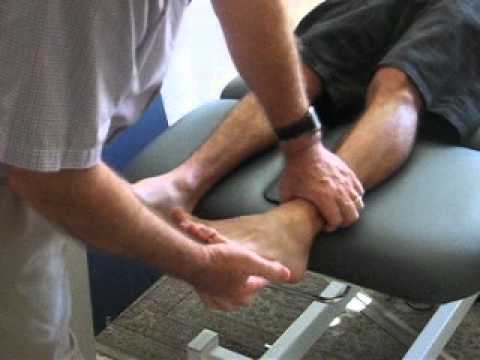nalco group
bone, muscle & joint pain physio
BOOK NOW / WHATSAPP ABOUT YOUR PAIN OR INJURY
- ORCHARD 400 Orchard Road #12-12 Singapore 238875
- TAMPINES 9 Tampines Grande #01-20 Singapore 528735
- SERANGOON 265 Serangoon Central Drive #04-269 Singapore 550265
Home > Blog > Physiotherapy > Conditions > Foot & Ankle Pain > Cuboid Syndrome Physiotherapy
Cuboid Syndrome Physiotherapy

Cuboid syndrome is a condition caused by a problem with the cuboid bone, producing pain on the outer side, and possibly underside, of the foot. Our cuboid bone is part of the calcaneocuboid joint that helps you maintain foot mobility when walking.
Thing is, problems can develop with the cuboid bone that make it shift and dislodge from its normal position, causing pain and difficulty standing or walking.
Though cuboid syndrome can happen to anyone, most of the time, it is athletes and dancers (found in about 17% of professional
ballet dancers) that are more at risk to developing this condition. Age doesn't seem to be a factor in the getting this condition ie anyone at any age can get this injury.
The prevalence of cuboid injuries in the United States is not clear; however, it has been diagnosed in 6.7% of patients with inversion ankle sprains (when the ankle rolls outward and the foot rolls inward).
Approximately 4% of athletes who report foot injuries have symptoms from the cuboid bone.
It can happen from trauma or without any recalled injury.
Our senior physiotherapists design individualized treatment programs to help people with cuboid syndrome
- reduce their pain
- regain lost strength and movement
- get back to their normal lives
first of all, What Is Cuboid Syndrome?
Our foot has a total of 26 bones in it, and the cuboid is one of the 26. It is located on the outer side of the foot, about halfway between the pinky toe and the heel bone. The cuboid bone moves and shifts to a small degree during normal foot motion.
Certain forceful movements or prolonged positions can cause the cuboid bone to move too far, which interferes with its normal position or motion. This causes immediate foot pain, which can feel worse when standing or walking on the foot.
Unfortunately, cuboid syndrome often happens without warning and suddenly.
It may happen with
- ankle
sprains, as the foot rolls in (inversion type of ankle sprain)
- when an individual stomps their foot hard
onto a hard surface, such as concrete, particularly if the person is
wearing rigid or high-heeled shoes
- hard landings onto the feet from a jump, or falling from a height onto the feet can also create enough force to affect the cuboid bone’s position and cause a problem.
A cuboid bone injury can develop from maintaining prolonged foot positions, such as
- standing or walking in high heels or
- remaining in a toe-pointed (ballet dancer’s en pointe) position, for a long time
Peroneal tendon problems, such as weakness, tendonitis, or tendinopathy, also can contribute to, or worse, happen at the same time as cuboid syndrome.
The majority of people who suffer cuboid syndrome have flat feet, although the condition can even occur in people with very high arches.
How Does having cuboid syndrome Feel like?
Cuboid syndrome causes sharp pain on the outer side, and possibly also at the underside of the foot.
Fortunately, this pain does not usually spread to the rest of the foot or leg.
It often starts quite suddenly and lasts throughout the day. Pain can worsen with standing or walking, and can make walking on the foot impossible.
The pain is often completely relieved by taking weight off the foot.
When not putting weight on the foot, a person can usually move the foot around freely and with little to no pain. Without treatment, however, the pain during standing and walking can persist for days, weeks, or longer.
Also fortunately, invasive surgery is not usually necessary for treatment of cuboid syndrome. Our senior physiotherapist can help determine if cuboid syndrome is present, and design the correct treatment program for you, based on your particular condition and goals.
Signs and Symptoms

Cuboid syndrome can cause any of the following symptoms:
- Sharp pain on the outer side, and possibly underside, of the foot
- Increased pain when standing and/or walking
- Limping when walking, or an inability to walk on the foot at all
- Reduced pain when no weight is put on the foot
- Possible mild on the outer side of the foot
How Is cuboid syndrome Diagnosed?
Our senior physiotherapist will conduct an in-depth and thorough evaluation that includes taking your health history. We will also ask you detailed questions about your injury, such as:
- How and when did the pain start?
- What type of discomfort do you feel, and where do you feel it?
- What can’t you do right now, in your daily life, work, or sport, due to the pain?
We will perform tests on your body to find physical problems, such as:
- Misalignment of the cuboid bone
- Weakness or tightness in the muscles of the foot and leg
- Joint stiffness
- Difficulty standing and/or walking
If we find any of the above problems, physiotherapy treatment may start right away, to help get you on the road to recovery and back to your normal activities.
If more severe problems are suspected or found, we may collaborate with a physician to obtain special diagnostic testing, such as an X-ray. We work closely with doctors, physicians and other health care providers to make certain that you receive an accurate diagnosis and proper treatment.
how our senior physiotherapists can help you

Fortunately, cuboid syndrome often responds to treatment quickly.
We will work with you to design a specific treatment program that will speed your recovery, including exercises and treatments that you can do at home. Physiotherapy will help you return to your normal lifestyle and activities.
Patients often ask how many sessions or how much times does it take for cuboid syndrome to be resolved completely with physiotherapy with us. This depends on the variables involved such as
- severity of the condition
- age of the patient
- how quickly the patient body heals
- how the patient's body responds to physiotherapy
- compliance to exercise and precautions
- mostly, the fastest we have discharged patients for this condition from physiotherapy is about 2 - 4 sessions, and some of the slower/common timelines lie between 6 - 12 sessions, with full recovery within a few weeks or less when a proper treatment program is implemented.
During the first 24 to 48 hours following your diagnosis of cuboid syndrome, we may advise you to:
- Avoid all jumping, hopping, and running activities.
- Limit prolonged walking.
- Wear flat, stiff-soled shoes.
- Stay active around the house, and go on short walks several times per day. Movement will decrease pain and stiffness, and help you feel better.
- Apply cold therapy to the affected area for 15 to 20 minutes every 2 hours.
Our senior physiotherapist will work with you to:
Reposition the cuboid and stabilize it. We may use hands-on (manual therapy) to reposition the cuboid bone back to its normal position, so that it can move more normally. This can potentially
- relieve most of the pain and
- restore the ability to stand and walk
We then may use various exercises and techniques to support the cuboid bone’s corrected position. These may include
- foot exercises
- taping of the foot
- advice on footwear
- when to return to activity
Reduce pain and other symptoms.
We will help you understand how to avoid or modify the activities that caused the injury, so healing can begin. We may use different types of treatments and technologies to control and reduce your pain and symptoms. The focus will be placed on
- physiotherapy exercises
- gentle stretches
- ultrasound therapy
- cold therapy
- heat therapy
- gentle movement and mobilization to reduce pain and joint stiffness without the need for pain medication.
Improve motion
We will choose specific activities and treatments to help restore normal movement in the foot or in any stiff joints. These might begin with "passive" motions that the we perform for you to move a joint, and progress to active exercises and stretches that you do yourself. You can perform these motions at home and in your workplace to help hasten healing and pain relief.
Improve flexibility
We will determine if any muscles in the area are tight, start helping you stretch them, and teach you stretching exercises to do at home.
Improve strength
If we find any weak muscles, we will choose, and teach you, the correct exercises to steadily restore your strength and agility. When addressing cuboid syndrome, foot and ankle muscle exercises are commonly taught to strengthen the muscles and tendons around the cuboid bone, arch of the foot, and ankle.
Improve endurance
Restoring muscular endurance is important after an injury. We will develop a program of activities to help you regain the endurance you had before the injury, and improve it.
Learn a home program
We will teach you strengthening, stretching, and pain-reduction exercises to perform at home. These exercises will be specific for your needs; if you do them as prescribed by our senior physical therapists, you can accelerate your recovery.
Return to activities.
We will discuss your activity levels with you and use them to set your work, sport, and home-life recovery goals. Your physiotherapy treatment program with us will help you reach your goals in the safest, fastest, and most effective way possible. We may teach you how to choose the best footwear, to avoid putting unwanted pressure on the cuboid bone, and to add specialized support such as orthotics.
Once your pain is gone, it will be important for you to continue your foot exercises at home, to help keep your foot healthy and pain free.
In all but the most extreme cases, physiotherapist treatment provides excellent results. Surgery and pain medication (such as opioid medication) are not usually needed for this condition.
